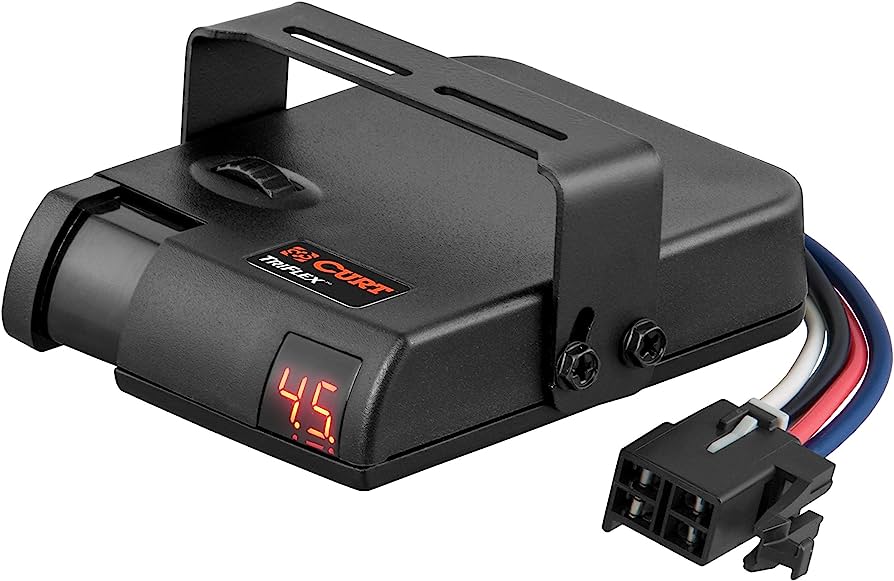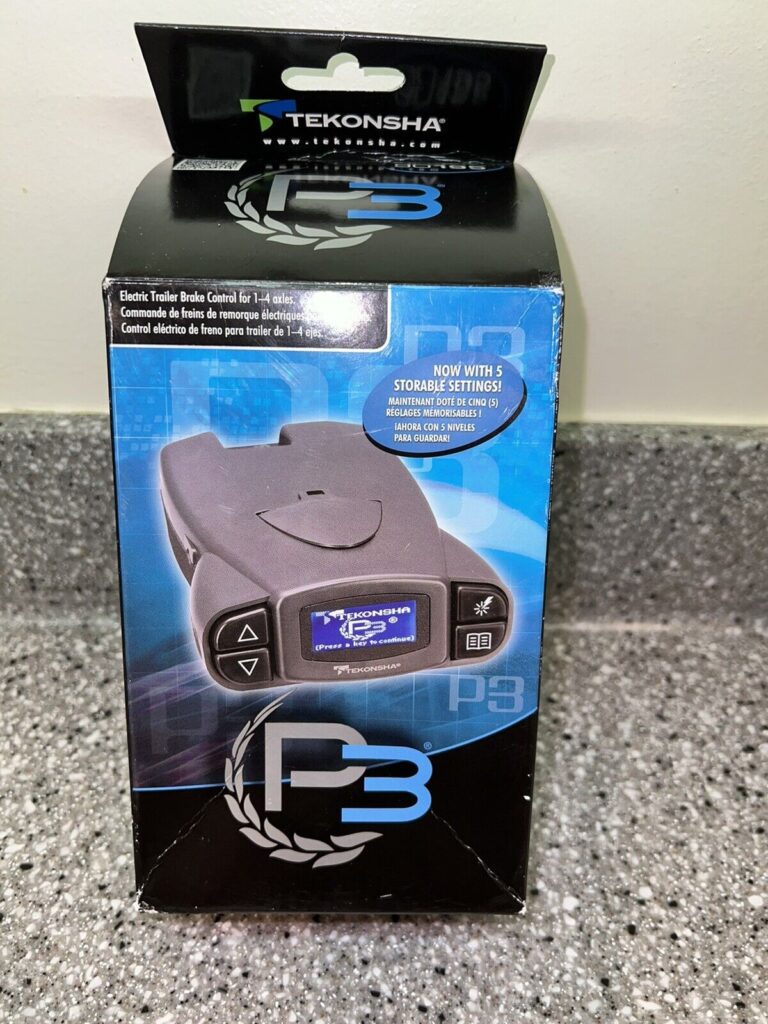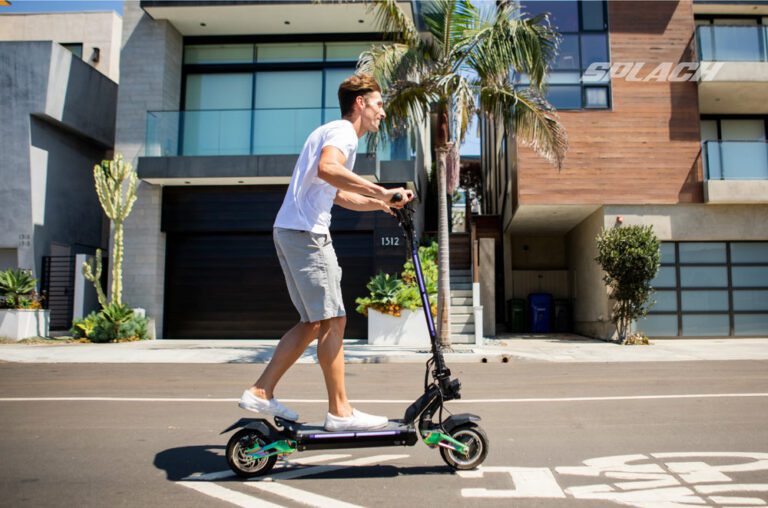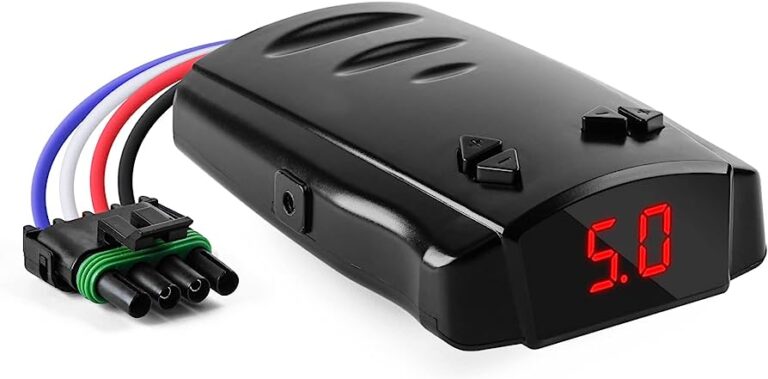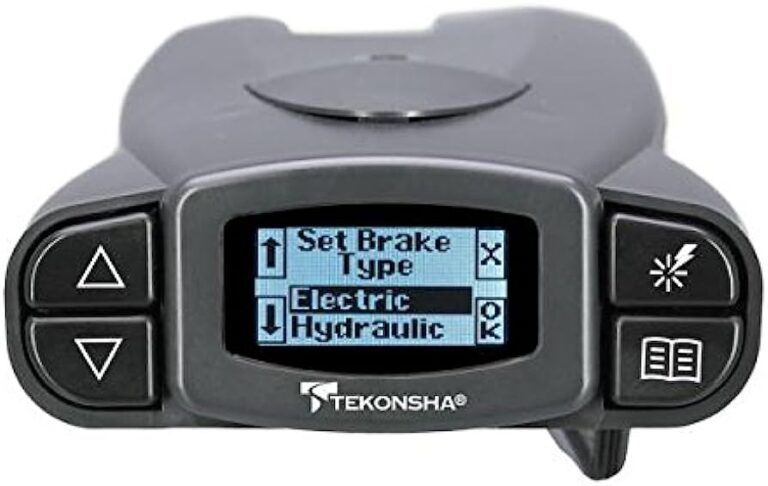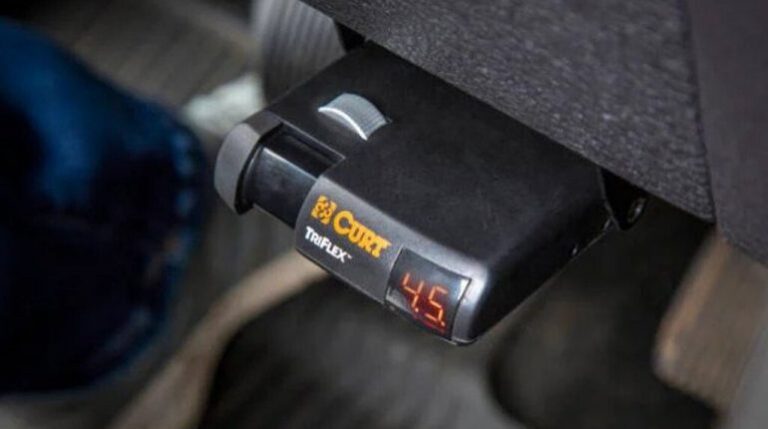Curt Trailer Brake Controllers: Ensuring Safe and Effective Braking Power
Curt trailer brake controllers are reliable and efficient devices that provide smooth and controlled braking for trailers. Curt brake controllers are designed to ensure safe and effective braking when towing a trailer.
These devices utilize advanced technology to detect deceleration and send appropriate signals to the trailer’s brakes, helping to maintain stability and control during braking. With a wide range of models available, curt brake controllers offer options for various trailer sizes and towing needs.
Whether you’re hauling a small utility trailer or a heavy-duty camper, curt brake controllers provide precise braking power, making your towing experience safer and more enjoyable. Upgrade your towing setup with a curt brake controller and experience enhanced braking performance like never before.
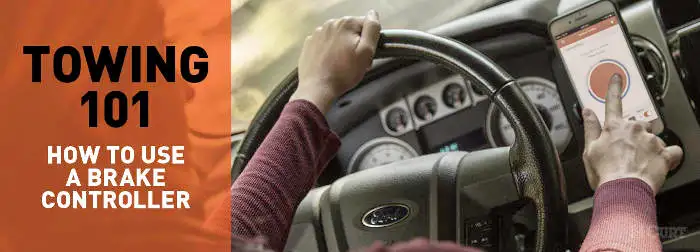
Credit: www.curtmfg.com
Enhanced Safety And Control
Curt Trailer Brake Controllers: Enhanced Safety And Control
When it comes to towing a trailer, safety is of the utmost importance. Brake controllers play a critical role in ensuring effective braking power and preventing trailer swinging and swaying. Curt trailer brake controllers are designed to provide enhanced safety and control, giving you peace of mind as you navigate the roads with your trailer in tow.
In this section, we will explore the key features and benefits of curt trailer brake controllers.
Ensuring Effective Braking Power
Curt trailer brake controllers are engineered to deliver optimal braking power, allowing you to have better control over your trailer. Here are the key points to consider:
- Proportional braking: These controllers offer proportional braking, meaning the braking power is applied in proportion to the vehicle’s deceleration. This ensures smooth and proportional braking, improving overall safety and control.
- Adjustable gain settings: Curt brake controllers come with adjustable gain settings, allowing you to customize the braking response based on your trailer’s weight and braking requirements. This ensures that you have the right amount of braking power for any towing situation.
- Quick response time: With curt brake controllers, you can expect quick response times, ensuring immediate braking action when you need it. This is crucial in emergency situations or when encountering unexpected obstacles on the road.
Preventing Trailer Swinging And Swaying
Trailer swinging and swaying can be hazardous, causing instability and loss of control while towing. Curt trailer brake controllers help mitigate these risks. Here are the key points to consider:
- Integrated sway control: Some curt brake controllers come with integrated sway control technology. This feature detects and reduces trailer sway by applying the trailer brakes independently, keeping your trailer stable and minimizing the risk of accidents.
- Smooth and gradual braking: The proportional braking system of curt brake controllers ensures that the trailer brakes are applied gradually, preventing sudden jerking or instability that can lead to swaying. This promotes a smoother towing experience and enhances safety.
- User-friendly interface: Curt brake controllers offer user-friendly interfaces, making it easy to monitor and adjust the sway control settings. This allows you to fine-tune the controls to suit your specific towing needs and preferences.
Curt trailer brake controllers provide enhanced safety and control while towing. With features such as proportional braking, adjustable gain settings, integrated sway control, and user-friendly interfaces, these controllers offer peace of mind and a smooth towing experience. Upgrade your trailer’s braking system with a curt brake controller and enjoy the confidence of knowing you have the best in safety and control.
Easy Installation And Setup
Installing and setting up a curt trailer brake controller is a breeze, thanks to its user-friendly design and straightforward process. Whether you’re a seasoned diy enthusiast or a novice, you’ll have no trouble getting your brake controller up and running in no time.
Here’s why the installation and setup of curt trailer brake controllers are so convenient:
Simple Wiring Process
- Curt trailer brake controllers come with clear and detailed instructions, allowing you to navigate the wiring process effortlessly.
- Wiring your brake controller is made easy with the plug-and-play feature, eliminating the need for any complex electrical work.
- The controller connects directly to your vehicle’s electrical system, enabling seamless communication between your brake controller and the trailer brakes.
- You’ll find that the wiring harness provided with the curt brake controller perfectly matches your vehicle’s specific make and model, ensuring a hassle-free installation experience.
User-Friendly Interface
- The intuitive interface of curt trailer brake controllers makes it incredibly easy to configure and adjust the settings according to your preferences.
- With the clearly labeled buttons and responsive display, you can effortlessly navigate through the menu options and make necessary adjustments without any confusion.
- The user-friendly interface allows you to set the brake intensity, gain, and other key parameters, enabling you to achieve optimal braking performance tailored to your trailer’s specific needs.
- The compact and ergonomic design of the controller ensures that it fits comfortably in your hand, providing a comfortable and convenient user experience.
Experience the convenience of easy installation and setup with curt trailer brake controllers. No more daunting wiring processes or complicated interfaces. With curt, you can enjoy smooth sailing on the road with confidence in your trailer’s braking performance.
Compatibility With Various Trailer Types
Suitable For Different Weight Capacities
Curt trailer brake controllers are renowned for their compatibility with various trailer types, including different weight capacities. Whether you’re hauling a heavy load or a lighter trailer, curt has the perfect brake controller for your towing needs. Here are the key points to consider:
- Heavy-duty trailers: Curt trailer brake controllers are designed to handle heavy-duty trailers with ease. They offer precise braking control and can handle weight capacities of up to 20,000 pounds.
- Light trailers: If you’re towing a lighter trailer, curt brake controllers deliver smooth and reliable braking performance. They can accommodate weight capacities as low as 2,000 pounds.
- Adjustable settings: Curt offers a range of brake controllers with adjustable settings, allowing you to fine-tune the braking intensity based on the weight of your trailer. This ensures optimal braking performance and improved safety on the road.
- Easy installation: Installing a curt brake controller is a breeze, thanks to their user-friendly design. They come with clear instructions and plug-and-play wiring harnesses, making the installation process quick and hassle-free.
- Compatibility with different trailers: Curt brake controllers are compatible with a wide range of trailer types, including utility trailers, travel trailers, fifth-wheel trailers, and more. Whether you’re towing for recreational purposes or work-related tasks, curt has got you covered.
Versatility For Different Towing Needs
Curt trailer brake controllers offer versatility to cater to various towing needs. No matter the type of trailer you’re towing or the terrain you’re traversing, curt has a brake controller that suits your requirements. Here are the key points:
- Electronic and time-based control: Curt offers both electronic and time-based brake controllers, allowing you to choose the type that best fits your towing preferences. Electronic brake controllers provide smoother and more proportional braking, while time-based controllers offer simplicity and reliability.
- Compatibility with different brake systems: Whether your trailer has electric brakes or hydraulic brakes, curt brake controllers are compatible with both systems. They ensure seamless integration and effective braking performance regardless of the brake mechanism.
- Towing modes: Many curt brake controllers come with different towing modes, such as “proportional” and “user-controlled.” Proportional mode applies the brakes in proportion to the braking force applied to your vehicle, while user-controlled mode allows you to manually adjust the braking intensity.
- Advanced features: Curt brake controllers incorporate advanced features like automatic leveling and short-circuit protection. These ensure optimal performance, safety, and protection against electrical malfunctions.
- Compatibility with various vehicles: Curt brake controllers are designed to be compatible with a wide range of vehicles, including trucks, suvs, and rvs. Whether you’re towing with a compact car or a heavy-duty truck, curt has the right brake controller for your vehicle.
Curt trailer brake controllers offer compatibility and versatility for various trailer types and towing needs. From heavy-duty trailers to lighter loads, curt provides reliable braking control and ease of installation. Their wide range of adjustable settings and compatibility with different brake systems make them a top choice for towing enthusiasts.
Choose curt for a safer and smoother towing experience.
Electrical Connections And Sensors
Brake Pedal Activation
When it comes to curt trailer brake controllers, one of the key features is the brake pedal activation. This feature allows for a smooth and responsive braking experience while towing. Here are some important points to know about brake pedal activation:
- Brake pedal activation enables the trailer braking system to engage when the vehicle’s brake pedal is pressed. This ensures that the trailer brakes are synchronized with the vehicle’s brakes.
- It provides a proportional braking effect, which means that the braking force applied to the trailer is proportional to the braking force applied to the vehicle. This results in efficient and safe braking, preventing trailer skidding or jackknifing.
- The brake pedal activation feature utilizes electrical connections and sensors to detect the vehicle’s braking action and immediately send signals to activate the trailer brakes.
- The system is designed to respond quickly and accurately to changes in braking intensity. This allows for precise control over the trailer’s braking performance and ensures smooth deceleration.
- Using a curt trailer brake controller with brake pedal activation is essential when towing heavy loads or traveling on steep terrains. It enhances towing safety and provides peace of mind for drivers.
Proportional Braking Systems
When it comes to selecting the right curt trailer brake controller, understanding proportional braking systems is crucial. These systems offer a more advanced and responsive towing experience. Here are the key points about proportional braking systems:
- Proportional braking systems are designed to apply the trailer brakes in proportion to the vehicle’s braking action. This means that the trailer brakes are activated with an intensity that matches the vehicle’s deceleration.
- These systems utilize sophisticated sensors and circuits to monitor the vehicle’s braking force and apply the appropriate amount of braking power to the trailer. This ensures a smooth and synchronized braking experience.
- The proportional braking system adjusts the trailer braking intensity based on factors such as the vehicle’s speed, acceleration, and braking force. This enables precise control and reduces the risk of trailer skidding or jerking.
- With a proportional braking system, the trailer brakes are engaged instantly when the vehicle’s brakes are applied. This eliminates any delay and provides efficient and effective braking performance.
- Curt trailer brake controllers with proportional braking systems offer advanced features such as adjustable gain and sensitivity settings. These allow users to fine-tune the braking performance based on their specific towing needs.
Curt trailer brake controllers with electrical connections and sensors provide reliable brake pedal activation. This ensures smooth and proportional braking, offering enhanced towing safety. Proportional braking systems further enhance the braking experience, providing precise control and responsiveness. So, when it comes to selecting a curt trailer brake controller, considering these features can make a significant difference in your towing experience.
Brake Controller Adjustments
Curt Trailer Brake Controllers
When it comes to towing a trailer, having a reliable brake controller is of utmost importance. Curt trailer brake controllers are known for their quality and performance, making them a popular choice among trailer owners. One crucial aspect of using a brake controller effectively is the ability to make necessary adjustments.
In this section, we will discuss two key adjustments that can optimize the braking force and sensitivity of your curt trailer brake controller.
Adjusting Braking Force
To ensure optimal stopping power, it is essential to adjust the braking force of your curt trailer brake controller. Here are the key points to keep in mind:
- Find the right balance: The braking force should be set in a way that allows your trailer’s brakes to engage smoothly without overpowering the tow vehicle’s brakes.
- Initial setup: Begin by adjusting the braking force to a mid-range setting. This will provide a good starting point for further adjustments.
- Test and fine-tune: Take your tow vehicle and loaded trailer to a safe, open area, away from traffic. Apply the brakes and observe the stopping distance. If the trailer brakes engage too aggressively, reduce the braking force. Conversely, if the trailer does not slow down enough, increase the braking force incrementally until you find the optimal setting.
Fine-Tuning Sensitivity
The sensitivity adjustment is crucial for ensuring that your trailer’s brakes engage at the right time. Here’s what you need to know:
- Start with default settings: Most curt trailer brake controllers come with preset sensitivity settings. Begin by using the factory default setting before making any adjustments.
- Road conditions and trailer weight: Keep in mind that different road conditions and trailer weights require different sensitivity levels. If you’re towing on slippery roads or hauling a heavy load, you may need to increase the sensitivity for better brake response.
- Test and adjust: Once you’ve set the initial sensitivity, take your tow vehicle and trailer for a test drive. Observe how your trailer brakes engage during various driving scenarios. If the brakes engage too early or too late, make small adjustments to the sensitivity level until you achieve the desired braking performance.
Having the ability to make brake controller adjustments allows you to fine-tune your trailer’s braking system for optimal performance. By following these guidelines for adjusting braking force and sensitivity, you can ensure a safer and more controlled towing experience with your curt trailer brake controller.
Brake Controller Types
Curt trailer brake controllers offer two main types of brake controllers: time-delayed and proportional. Each type has its own set of features and benefits, catering to different towing needs.
Time-Delayed Brake Controllers
Time-delayed brake controllers, also known as solid-state brake controllers, are a popular choice among trailer owners. These controllers apply a pre-set amount of braking power to the trailer, based on a time delay that you can adjust according to your preference.
Here are the key points to consider:
- Simple setup: Time-delayed brake controllers are easy to install and require minimal adjustments.
- Affordable option: These controllers are often more budget-friendly compared to their proportional counterparts.
- Versatile compatibility: They work well with a wide range of trailers, making them suitable for various towing needs.
- Ideal for light to moderate loads: Time-delayed brake controllers are suitable for towing smaller trailers or those with lighter loads.
- Suitable for occasional towing: If you only tow occasionally or have a limited budget, a time-delayed brake controller may be a suitable choice.
Proportional Brake Controllers
Proportional brake controllers, on the other hand, provide a more advanced braking experience. They apply braking power to the trailer in proportion to the braking force applied to the towing vehicle. Here’s what you need to know about proportional brake controllers:
- Smooth braking experience: These controllers deliver a smoother and more natural braking experience by applying the right amount of braking force in real-time.
- Enhanced safety: Proportional brake controllers help maintain control and stability when braking, reducing the risk of accidents or trailer sway.
- Suitable for heavy loads: If you regularly tow heavy loads or larger trailers, a proportional brake controller is recommended for optimal braking performance.
- Customizable settings: These controllers often come with adjustable settings to fine-tune the braking response, allowing you to customize it based on your specific towing requirements.
- Easy installation: Modern proportional brake controllers are designed to be user-friendly, making the installation process a breeze for even novice trailer owners.
Remember, choosing the right brake controller depends on factors such as the size of your trailer, towing frequency, and personal preference. Whether you opt for a time-delayed brake controller or a proportional one, curt offers dependable and high-quality options to suit your towing needs.
Brake Controller Compatibility
Curt trailer brake controllers are designed to provide seamless integration with different vehicle models and existing trailer braking systems. Here are the key points to understand regarding brake controller compatibility:
Compatibility With Different Vehicle Models
- The curt trailer brake controllers are compatible with a wide range of vehicle models, ensuring that you can easily install them in your preferred vehicle.
- These brake controllers are engineered to work effectively with various makes and models, including trucks, suvs, and vans.
- Whether you own a ford, chevrolet, toyota, or any other popular vehicle brand, you can trust that curt trailer brake controllers will fit seamlessly.
- The compatibility extends to both newer and older vehicle models, ensuring that you can enhance your towing experience regardless of your vehicle’s age.
- With their versatile compatibility, curt brake controllers offer a convenient solution for individuals who frequently tow different vehicles or switch between vehicles for various towing applications.
Integration With Existing Trailer Braking Systems
- Curt trailer brake controllers are designed to integrate smoothly with existing trailer braking systems, allowing for efficient and synchronized operation.
- These controllers can work in unison with electric, hydraulic, and electric over hydraulic trailer braking systems, providing reliable braking performance.
- The integrated design ensures that the brake controller sends accurate signals to the trailer brakes, enabling responsive and controlled stopping power.
- By seamlessly integrating with the trailer braking system, curt brake controllers enhance safety and towing performance, giving you added peace of mind on the road.
- Whether you are towing a boat, rv, or cargo trailer, the compatibility of curt brake controllers with various braking systems ensures a smooth and stable towing experience.
Curt trailer brake controllers offer compatibility with different vehicle models and seamless integration with existing trailer braking systems. With their versatile design and reliable performance, they provide an ideal solution for enhancing your towing experience.
Additional Features And Technology
Wireless Connectivity
In this modern era, technology has advanced in every aspect of our lives, and trailer brake controllers are no exception. Curt trailer brake controllers come equipped with additional features and the latest technology to enhance your towing experience. One of these advanced features is wireless connectivity.
Here are the key points about wireless connectivity:
- Seamlessly connect your trailer brake controller to your smartphone or tablet via bluetooth technology.
- Monitor and control your trailer’s braking system wirelessly, eliminating the need for physical wiring or hard connections.
- Adjust the brake settings with ease using your smartphone, providing convenience and flexibility.
- Receive real-time updates and alerts on your mobile device, keeping you informed about the performance of your trailer’s brakes.
- Wireless connectivity ensures a secure and reliable connection between your trailer brake controller and your mobile device.
- Enjoy the freedom of controlling and monitoring your trailer’s brakes from a distance, giving you peace of mind while towing.
Diagnostic Display And Alerts
When it comes to trailer brake controllers, having access to diagnostic information and alerts is crucial. Curt trailer brake controllers go the extra mile by providing a diagnostic display and alerts feature that keeps you informed about your trailer’s brake system.
Here are the key points about diagnostic display and alerts:
- The diagnostic display provides real-time information on the status of your trailer’s brake system, giving you valuable insights into its functionality.
- Easily identify any issues or malfunctions in your trailer’s brake system through intuitive diagnostic codes and symbols displayed on the controller.
- Receive instant alerts and notifications about the performance of your trailer’s brakes, ensuring timely action and maintenance.
- Stay informed about the brake gain, voltage, and other essential metrics required for optimal braking performance.
- The diagnostic display and alerts feature enhances safety and allows you to address any potential problems before they escalate.
- With this feature, you can have a clear understanding of your trailer’s brake system and ensure smooth and reliable towing experiences.
With wireless connectivity and advanced diagnostic display and alerts, curt trailer brake controllers offer an unparalleled level of functionality and convenience. These additional features and technologies make towing your trailer safer, more efficient, and hassle-free. Upgrade to a curt trailer brake controller and experience the innovation firsthand.
Gathering The Proper Tools And Materials
Tools Required
To properly install your curt trailer brake controller, you’ll need the following tools:
- Wire strippers: These are essential for removing insulation from the wires and preparing them for connection.
- Butt connectors: These connectors allow for a secure and reliable electrical connection between wires.
- Electrical tape: This is used to insulate the connections and ensure they are protected from moisture and other elements.
- Crimping tool: This tool is necessary for crimping the butt connectors and ensuring a strong bond between the wires.
- Multimeter: A multimeter is used to measure electrical current, voltage, and resistance. It can help diagnose any issues with the brake controller installation.
- Drill and drill bits: These are necessary for mounting the brake controller bracket securely to your vehicle’s dashboard or console.
- Screwdriver: Depending on the type of brake controller you have, you may need a screwdriver to secure the bracket and connect the wires.
- Zip ties: These are handy for organizing and securing the wiring to prevent any loose or dangling wires.
Additional Wiring And Accessories
In addition to the tools mentioned above, you may also need the following wiring and accessories when installing your curt trailer brake controller:
- Brake control harness: This harness allows for a direct connection between your trailer’s brake wiring and the brake controller.
- Trailer connector: If your trailer does not have a brake control harness, you may need a trailer connector to establish a connection between the trailer and the brake controller.
- Power wire: A power wire is required to supply the brake controller with the necessary voltage. This wire connects the brake controller to the vehicle’s battery or an adequate power source.
- Fuse and fuse holder: It is crucial to protect the brake controller and wiring from electrical faults. Installing a fuse and fuse holder in the power wire helps safeguard the system.
- Mounting bracket: Depending on the brake controller model, a mounting bracket may be required to attach the brake controller securely to your vehicle’s interior.
Remember to check the specific requirements for your curt trailer brake controller model, as the tools and accessories needed may vary. By gathering the proper tools and materials before starting the installation process, you’ll be well-prepared to successfully install your brake controller and ensure safe towing experiences.
Connecting The Brake Controller To The Vehicle
Locating The Brake Control Port
When it comes to connecting your curt trailer brake controller to your vehicle, the first step is to locate the brake control port. This port is typically found under the dash on the driver’s side of the vehicle. Here are a few key points to keep in mind:
- The brake control port is usually a small, rectangular connector that is designed specifically for connecting a brake controller.
- It may be labeled with a symbol or the words “brake control” to help you locate it more easily.
- If you’re having trouble finding the port, consult your vehicle’s owner’s manual for detailed instructions and diagrams.
- It’s important to note that not all vehicles come with a factory-installed brake control port. In such cases, you may need to consult a professional to have one installed.
Wiring The Brake Controller
To properly connect your curt trailer brake controller to your vehicle, you will need to wire it correctly. Here’s what you need to know:
- Begin by identifying the wires coming from the brake controller. These wires are typically color-coded to make installation easier.
- The most common wire colors are red, black, blue, and white. However, it’s always a good idea to consult the manual that came with your specific brake controller to confirm the wire colors.
- Connect the red wire from the brake controller to the brake switch wire on your vehicle. This wire is responsible for sending the signal from the brake pedal to the brake controller.
- Connect the black wire from the brake controller to a clean, metal grounding point on your vehicle. This ensures that the brake controller has a solid ground connection.
- Connect the blue wire from the brake controller to the blue wire on the trailer connector. This wire activates the trailer’s electric brakes.
- Finally, connect the white wire from the brake controller to the white wire on the trailer connector. This wire is the ground connection for the trailer.
Remember, always refer to the specific installation instructions provided by curt and consult your vehicle’s owner’s manual for any additional information or specific wiring requirements.
Testing And Calibrating The Brake Controller
Ensuring Proper Functionality
To ensure that your curt trailer brake controller functions properly, it’s important to test and calibrate it correctly. Here are some key points to keep in mind:
- Read the user manual: Before testing and calibrating your brake controller, thoroughly read the instructions provided by the manufacturer. Familiarize yourself with the specific steps and requirements for your particular model.
- Connect to the trailer: Connect your trailer to the tow vehicle and ensure that the electrical connection between the two is secure. The brake controller relies on this connection to communicate with the trailer’s braking system.
- Power on the brake controller: Turn on the brake controller and check that it’s receiving power. Some models may have an indicator light or display that confirms power supply.
- Verify trailer connection: Confirm that the brake controller recognizes the trailer connection. This can be indicated by a light or display on the controller.
- Calibrate settings: Most curt brake controllers offer adjustable settings for brake force and sensitivity. It’s essential to calibrate these settings based on your specific towing setup and trailer weight. Follow the manufacturer’s instructions to calibrate these settings accurately.
- Test brakes: Once the settings are calibrated, test your trailer’s brakes by towing it in a safe, controlled environment. Gradually apply the brakes and observe their performance. Ensure that the trailer brakes engage smoothly and provide adequate stopping power without causing any instability.
- Adjust as needed: If you find that the brakes are too sensitive or not responsive enough, make adjustments to the brake force and sensitivity settings accordingly. Fine-tuning these settings can ensure optimal braking performance for your towing needs.
Remember, proper testing and calibration of your curt trailer brake controller are crucial for safe and effective towing.
Brake Controller Not Activating The Trailer Brakes
Checking The Brake Control Connection
If you find that your trailer brakes are not activating when you apply the brakes in your vehicle, it could be due to a problem with the brake control connection. Here are some key points to consider:
- Inspect the connection: Begin by checking the wiring connection between your vehicle and the brake controller. Ensure that all connections are secure and free from any damage or corrosion.
- Test the power supply: Use a circuit tester to verify that the brake controller is receiving power from the vehicle’s electrical system. This will help determine if the issue lies with the power supply.
- Check the ground connection: A faulty ground connection can also prevent the brake controller from activating the trailer brakes. Make sure that the ground wire is securely connected to a suitable grounding point on your vehicle.
- Clean the connection: Over time, dirt and debris can accumulate on the connection points, disrupting the flow of electricity. Clean the connection using a wire brush or contact cleaner to ensure a solid electrical connection.
By following these steps and ensuring that your brake control connection is in good condition, you can address any issues causing the trailer brakes to not activate properly.
Verifying The Trailer Brake System
If your brake control connection is not the root cause of the issue, it’s important to verify the functioning of your trailer brake system. Consider the following points:
- Inspect the trailer brakes: Check the condition of your trailer brakes, including the brake shoes, drums, and magnets. Look for any signs of wear, uneven braking, or damage that may be affecting their performance.
- Check brake fluid level: Ensure that your trailer’s brake fluid reservoir is adequately filled. Low brake fluid levels can impact the functioning of the brakes and may prevent them from activating properly.
- Adjust the brake controller: Make sure your brake controller is properly adjusted. Refer to the manufacturer’s instructions for your specific brake controller model to find the correct setting based on your trailer’s weight and braking requirements.
- Test the trailer brakes: Safely engage the brake pedal in your vehicle, and observe the response of the trailer brakes. If they do not engage or do not provide adequate braking force, further troubleshooting may be required.
By verifying the trailer brake system, you can identify any potential issues that may be causing the brakes to not activate as expected. This will help you take the necessary steps to ensure safe and effective braking while towing.
Uneven Or Inconsistent Braking Performance
Adjusting Brake Force Distribution
When it comes to trailer brake controllers, one of the common issues that users may encounter is uneven or inconsistent braking performance. This can be a result of improper brake force distribution, which can be easily adjusted to ensure optimal braking performance.
Here are some key points to keep in mind when adjusting brake force distribution:
- Understand the importance of brake force distribution: Proper brake force distribution ensures that the braking power is evenly distributed between the trailer and towing vehicle. This helps in maintaining control, stability, and prevents skidding or swaying.
- Follow the manufacturer’s instructions: Different trailer brake controllers may have specific guidelines for adjusting brake force distribution. It’s important to carefully read and follow the instructions provided by the manufacturer to ensure accurate adjustments.
- Start with a balanced setting: Begin by setting the brake force distribution to a balanced level. This typically means an equal distribution between the trailer and towing vehicle brakes. This allows for a baseline adjustment that can be fine-tuned later.
- Test and adjust: Take the trailer for a test drive and observe the braking performance. Pay attention to any signs of uneven or inconsistent braking. If more braking power is needed on the trailer, gradually increase the brake force distribution. Conversely, if the towing vehicle brakes are overpowering the trailer, decrease the brake force distribution.
- Fine-tune the adjustment: Make small adjustments to the brake force distribution until the desired braking performance is achieved. It may take some trial and error to find the optimal setting, but the effort will be worth it for safer and smoother towing experiences.
Inspecting Brake Components For Wear
To avoid uneven or inconsistent braking performance in your trailer, it’s crucial to regularly inspect the brake components for signs of wear and tear. This will help identify any potential issues early on and take necessary action. Here are the key points to consider when inspecting brake components:
- Check brake pads and shoes: Inspect the condition of the brake pads or shoes for any signs of excessive wear. Look for thinning or uneven surfaces, as well as any debris that may have accumulated. Replace worn brake pads or shoes to ensure optimal braking performance.
- Examine brake rotors or drums: Inspect the rotors or drums for any signs of damage such as scoring, cracking, or warping. These issues can affect the braking performance and should be addressed promptly. Consider resurfacing or replacing the rotors or drums if necessary.
- Inspect brake lines and hoses: Check the brake lines and hoses for any signs of leakage, cracks, or bulges. Damaged brake lines or hoses can result in brake failure and should be replaced immediately.
- Evaluate brake fluid level and condition: Ensure that the brake fluid level is within the recommended range and check its condition. If the brake fluid appears dark or contaminated, it may be necessary to flush and replace it to maintain proper braking performance.
- Test brake functionality: Conduct a brake test to ensure that both the trailer and towing vehicle brakes are engaging and releasing smoothly. This will help identify any issues such as sticking calipers or brake cylinders that require attention.
Regularly inspecting and maintaining the brake components of your trailer is essential for safe and consistent braking performance. By addressing any wear or damage promptly, you can avoid potential accidents and enjoy worry-free towing experiences.
Error Codes And Diagnostic Signals
Interpreting Error Codes
Curt trailer brake controllers are equipped with error codes that help users diagnose and troubleshoot problems. These error codes are displayed on the controller’s digital screen, providing valuable information about the issue at hand. Here are the key points to keep in mind when interpreting error codes:
- Error codes provide specific information about the problem with the brake controller, allowing users to quickly identify and resolve issues.
- Each error code corresponds to a particular problem, such as a wiring fault, short circuit, or voltage irregularity.
- Error codes are displayed as alphanumeric combinations, accompanied by an error description.
- It’s crucial to refer to the owner’s manual or documentation provided by curt for a comprehensive list of error codes and their corresponding explanations.
- By understanding these error codes, users can take necessary actions like checking connections, inspecting wiring, or seeking professional assistance as per the situation.
Addressing Common Diagnostic Signals
In addition to error codes, curt trailer brake controllers also emit diagnostic signals to convey important information to the user. These signals can help in identifying potential issues and ensuring optimal brake performance. Here are some common diagnostic signals and their significance:
- Diagnostic signal: Rapid flashing light
- Possible explanation: This signal usually indicates a short circuit detected in the trailer’s wiring system.
- Recommended action: Inspect the wiring for any exposed or damaged wires, ensuring proper insulation and connection.
- Diagnostic signal: Continuous light
- Possible explanation: A constantly illuminated light suggests a potential fault in the brake controller’s wiring or a loss of power.
- Recommended action: Check the power supply, connections, and fuse to ensure proper voltage is supplied to the brake controller.
- Diagnostic signal: Intermittent light
- Possible explanation: Intermittent lighting indicates an intermittent connection issue, such as loose or corroded wiring.
- Recommended action: Inspect and clean the connections, ensuring a secure and reliable electrical connection.
- Diagnostic signal: No light
- Possible explanation: If the brake controller’s display remains completely dark, it indicates a power supply problem, such as a blown fuse or disconnected wiring.
- Recommended action: Verify the power source, check the fuse, and ensure all connections are secure.
By understanding these common diagnostic signals, users can troubleshoot issues promptly, ensuring safe and efficient trailer braking. It’s important to consult the owner’s manual or seek professional assistance when encountering persistent or unfamiliar signals.
Frequently Asked Questions Of Curt Trailer Brake Controllers
What Is A Curt Trailer Brake Controller?
A curt trailer brake controller is a device that applies the brakes on a trailer to synchronize with the towing vehicle.
How Does A Curt Trailer Brake Controller Work?
A curt trailer brake controller uses electrical signals from the towing vehicle to activate the trailer brakes, helping to control and stop the trailer smoothly.
Why Should I Use A Curt Trailer Brake Controller?
Using a curt trailer brake controller is important for safe towing as it ensures the trailer brakes activate in sync with the towing vehicle, improving braking performance and stability.
Are Curt Trailer Brake Controllers Easy To Install?
Yes, curt trailer brake controllers are designed for easy installation, with clear instructions and user-friendly features that make the process hassle-free.
Can A Curt Trailer Brake Controller Be Used With Any Vehicle?
Curt trailer brake controllers are compatible with a wide range of vehicles, including trucks, suvs, and even some cars, making them versatile and suitable for various towing needs.
How Do I Determine The Right Curt Trailer Brake Controller For My Vehicle?
To determine the right curt trailer brake controller for your vehicle, consider factors such as towing capacity, type of trailer, and the number of axles the trailer has. Consulting the product guide or seeking professional advice can also help.
Are There Different Types Of Curt Trailer Brake Controllers Available?
Yes, curt offers a range of trailer brake controllers, including time-delayed controllers, proportional controllers, and even wireless options, allowing you to choose the one that best suits your towing requirements.
Can A Curt Trailer Brake Controller Be Adjusted For Different Trailer Loads?
Yes, curt trailer brake controllers typically offer adjustable settings to accommodate different trailer loads and braking preferences, providing flexibility and control while towing.
Are Curt Trailer Brake Controllers Reliable?
Curt trailer brake controllers are known for their reliability and durability, ensuring consistent performance and peace of mind during towing journeys.
Conclusion
Curt trailer brake controllers are an essential component for safe and efficient towing. With their advanced technology and user-friendly design, these controllers make it easy to control trailer brakes for a smooth and controlled towing experience. Whether you are towing a small utility trailer or a heavy-duty camper, curt trailer brake controllers provide precise braking power without compromising on safety.
The wide range of options available ensures that you can find the perfect controller to meet your specific towing needs. By investing in a curt trailer brake controller, you can have peace of mind knowing that you have a reliable and efficient braking system on your side.
So, if you are looking to enhance your towing experience and ensure the safety of your cargo, consider installing a curt trailer brake controller. Experience the difference it can make in your towing adventures.

